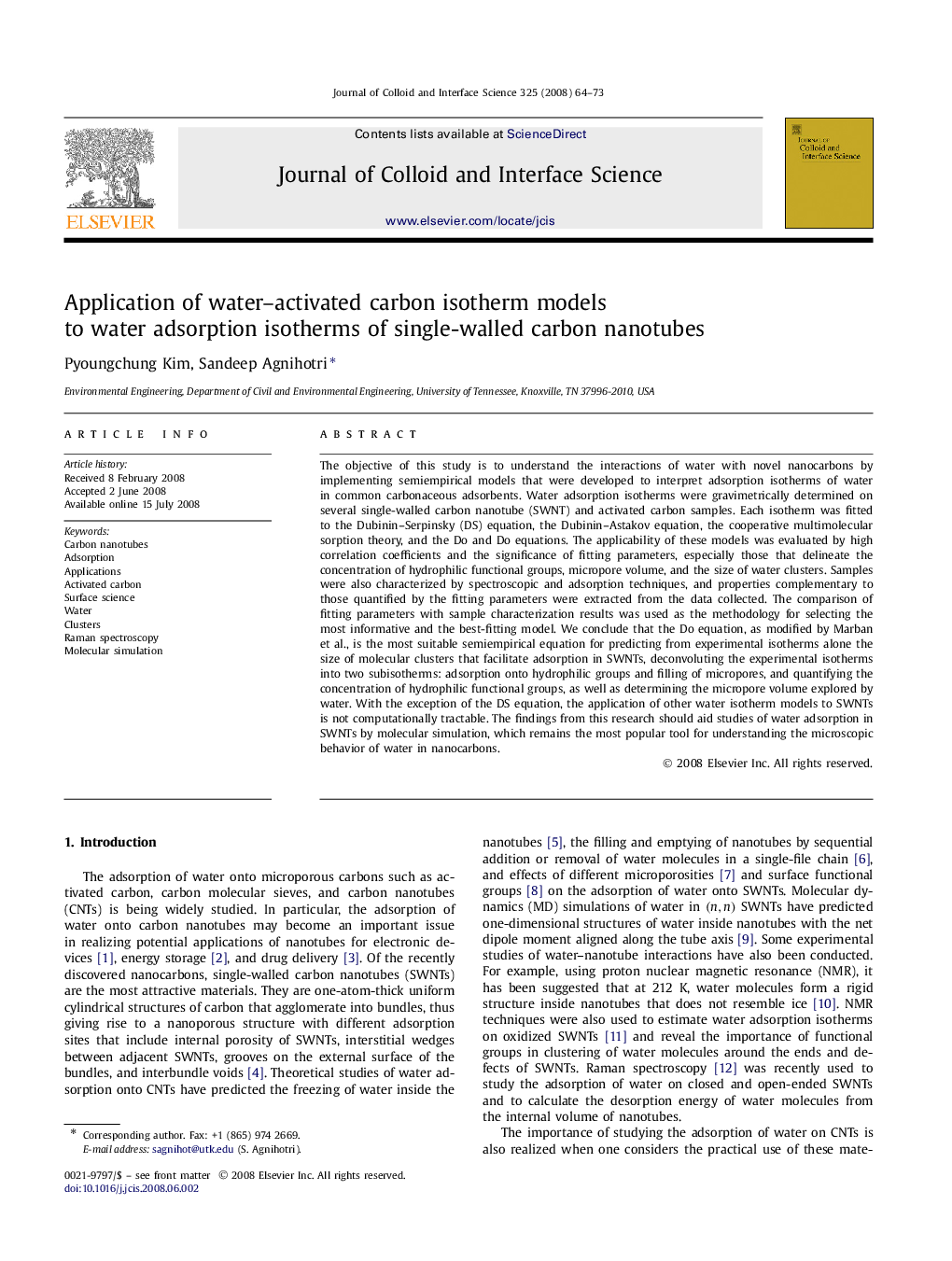| کد مقاله | کد نشریه | سال انتشار | مقاله انگلیسی | نسخه تمام متن |
|---|---|---|---|---|
| 611043 | 880665 | 2008 | 10 صفحه PDF | دانلود رایگان |

The objective of this study is to understand the interactions of water with novel nanocarbons by implementing semiempirical models that were developed to interpret adsorption isotherms of water in common carbonaceous adsorbents. Water adsorption isotherms were gravimetrically determined on several single-walled carbon nanotube (SWNT) and activated carbon samples. Each isotherm was fitted to the Dubinin–Serpinsky (DS) equation, the Dubinin–Astakov equation, the cooperative multimolecular sorption theory, and the Do and Do equations. The applicability of these models was evaluated by high correlation coefficients and the significance of fitting parameters, especially those that delineate the concentration of hydrophilic functional groups, micropore volume, and the size of water clusters. Samples were also characterized by spectroscopic and adsorption techniques, and properties complementary to those quantified by the fitting parameters were extracted from the data collected. The comparison of fitting parameters with sample characterization results was used as the methodology for selecting the most informative and the best-fitting model. We conclude that the Do equation, as modified by Marban et al., is the most suitable semiempirical equation for predicting from experimental isotherms alone the size of molecular clusters that facilitate adsorption in SWNTs, deconvoluting the experimental isotherms into two subisotherms: adsorption onto hydrophilic groups and filling of micropores, and quantifying the concentration of hydrophilic functional groups, as well as determining the micropore volume explored by water. With the exception of the DS equation, the application of other water isotherm models to SWNTs is not computationally tractable. The findings from this research should aid studies of water adsorption in SWNTs by molecular simulation, which remains the most popular tool for understanding the microscopic behavior of water in nanocarbons.
Figure optionsDownload as PowerPoint slide
Journal: Journal of Colloid and Interface Science - Volume 325, Issue 1, 1 September 2008, Pages 64–73